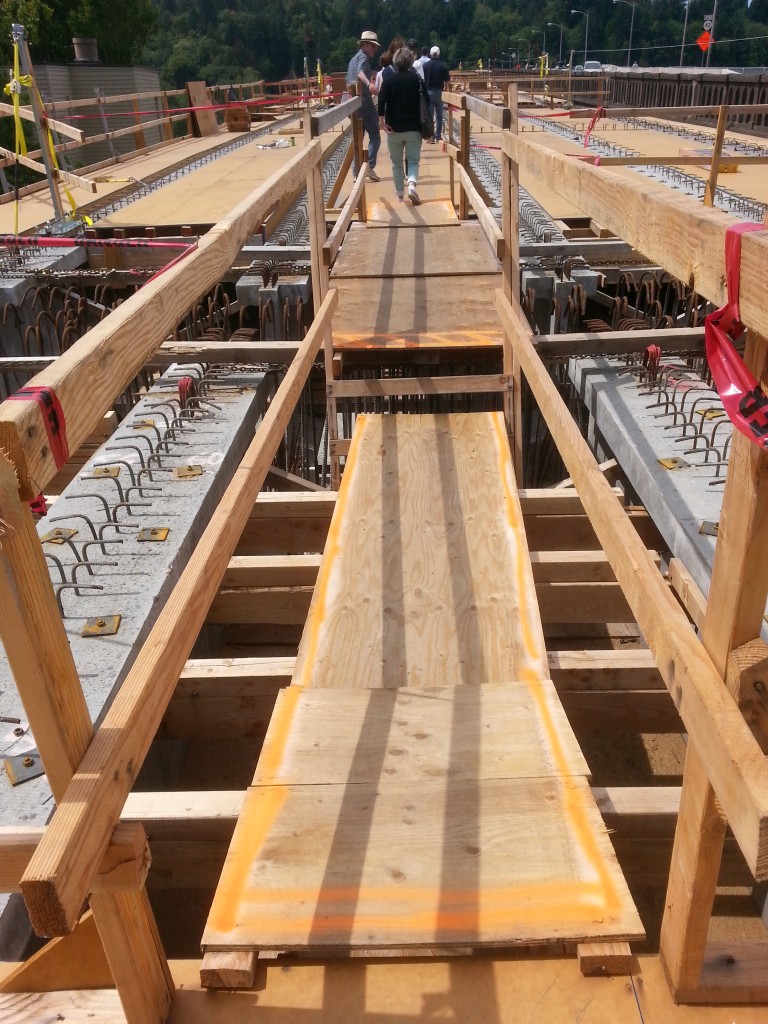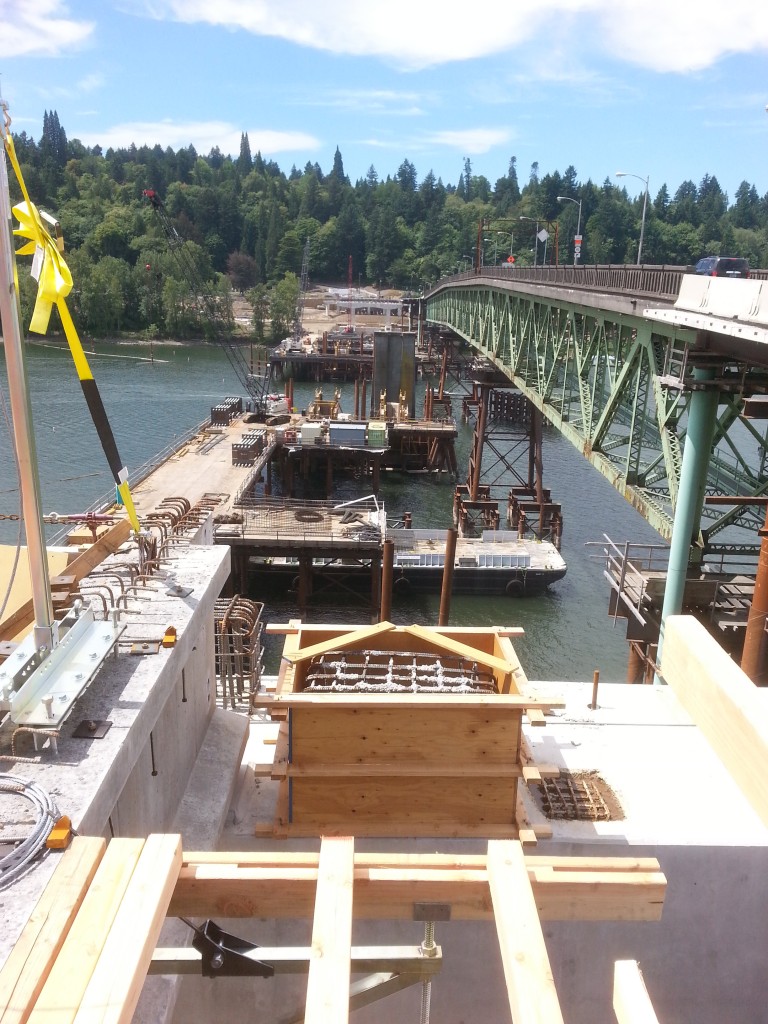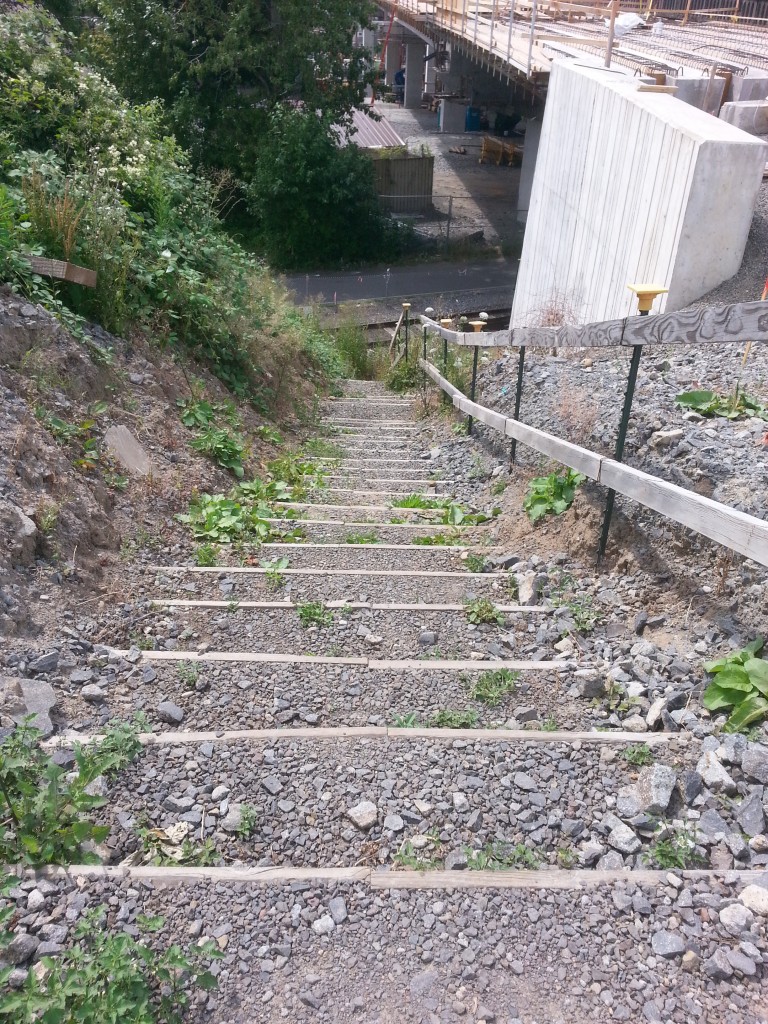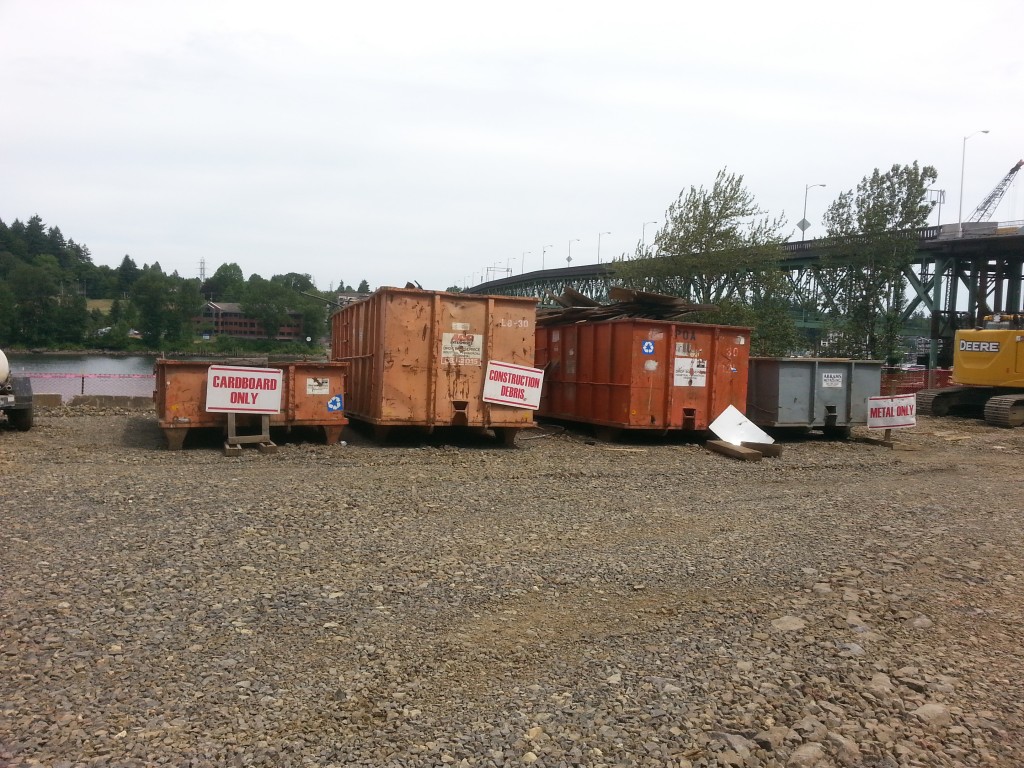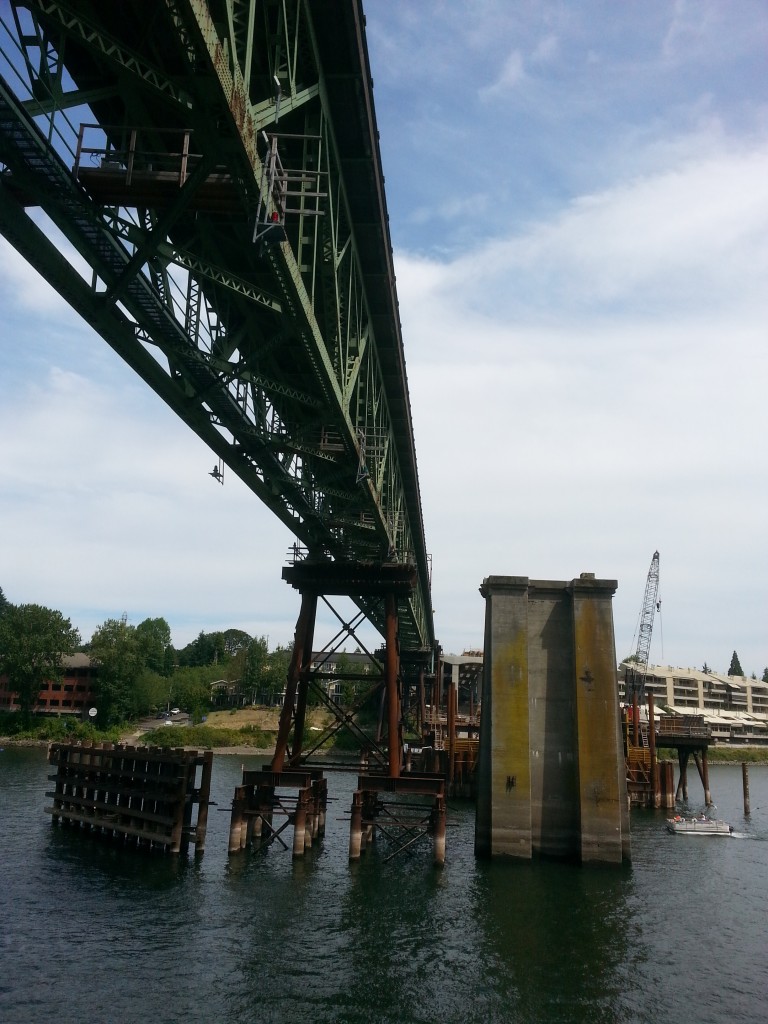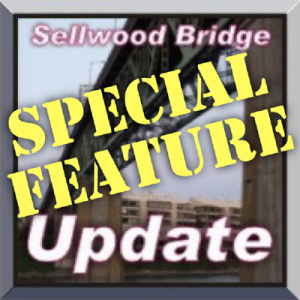 Behind the scenes as the Bridge project passes 50%
Behind the scenes as the Bridge project passes 50%
 Our shop has been located at the base of the Sellwood Bridge since we opened in 1981. Even then people knew the Bridge was a little shaky but the idea of repair was just a glimmer in an engineer’s eye, so we settled in next to our wobbly neighbor and got started repairing cars.
Our shop has been located at the base of the Sellwood Bridge since we opened in 1981. Even then people knew the Bridge was a little shaky but the idea of repair was just a glimmer in an engineer’s eye, so we settled in next to our wobbly neighbor and got started repairing cars.
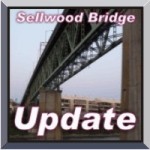
Click here to see all any in-progress reports from our monthly Sellwood Bridge Update column!
But since about 2006, the Bridge has dominated our business… you could say we’ve been living under the shadow of the bridge for almost 8 years. Recently the Bridge project passed the 50% completion point (yea!) and Multnomah County offered a tour for the people who have been on the various advisory councils throughout the project. We eagerly strapped on our boots to go behind-the-scenes, so this month we are pleased to show you what we saw…
Before we start looking at the state of the construction, here are two images to show where we started and where we hope to end up…
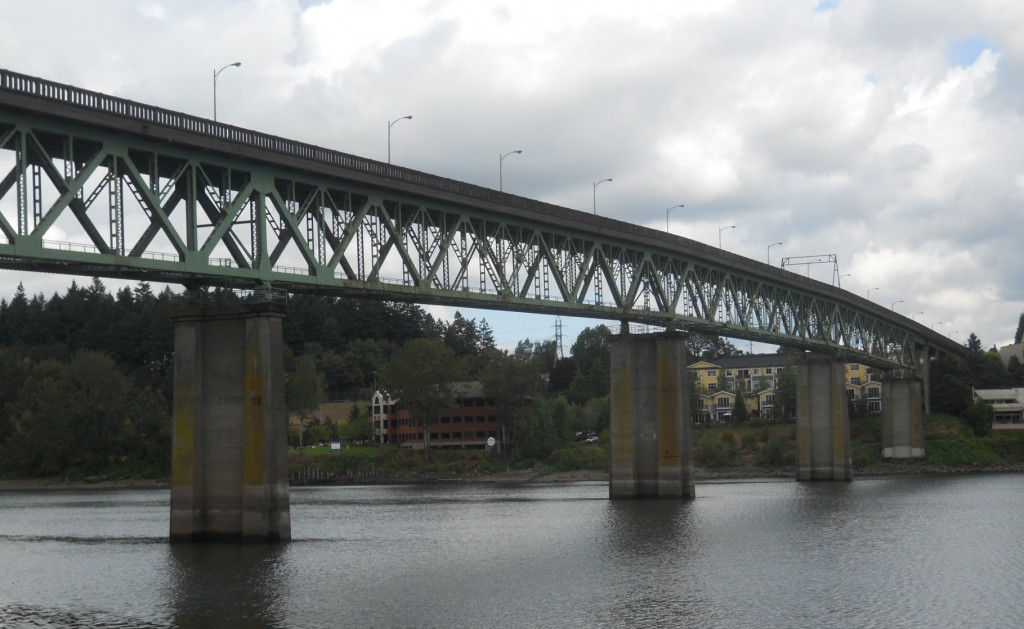
Sellwood Bridge in September, 2010. View looking east from the west bank. Rated 2 out of a possible score of 100 on the National Bridge Inventory Sufficiency rating scale.
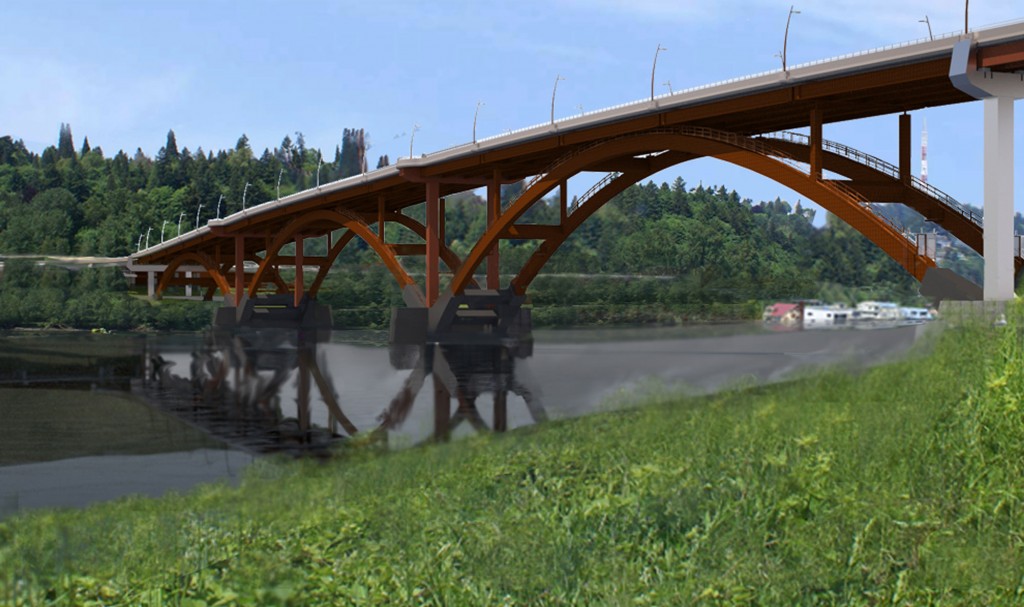
New design for the Sellwood Bridge, expected to be completed in 2016. View looking west from the east bank
Now, please join us for a journey into a once-in-a-lifetime construction project that only a very few people will ever get to see…
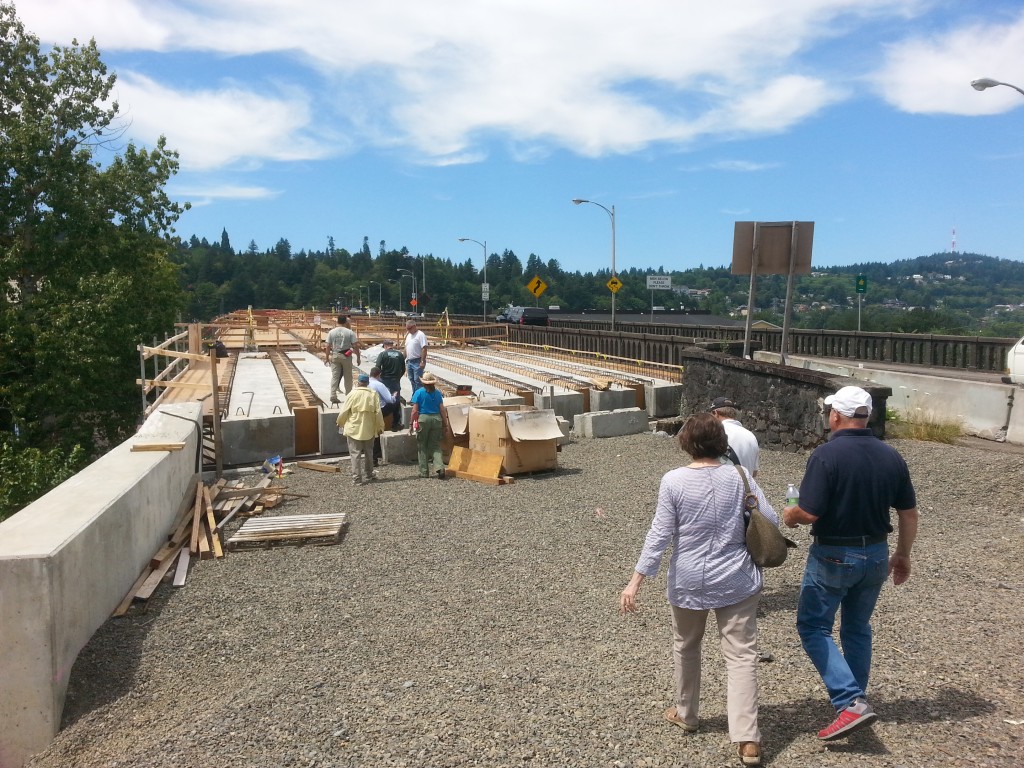
The tour started on the East side of the bridge. This view looks onto the new construction on the south lanes of the bridge.

On the east end of the bridge, a concrete deck pour is the next big thing. Since the bridge could eventually carry streetcar as well as vehicle, pedestrian, and bike traffic, the concrete will need to be deeper under the streetcar than under the lighter traffic. This picture shows how the depth will vary for the pedestrian side (toward the left) and the traffic side (toward the right.)
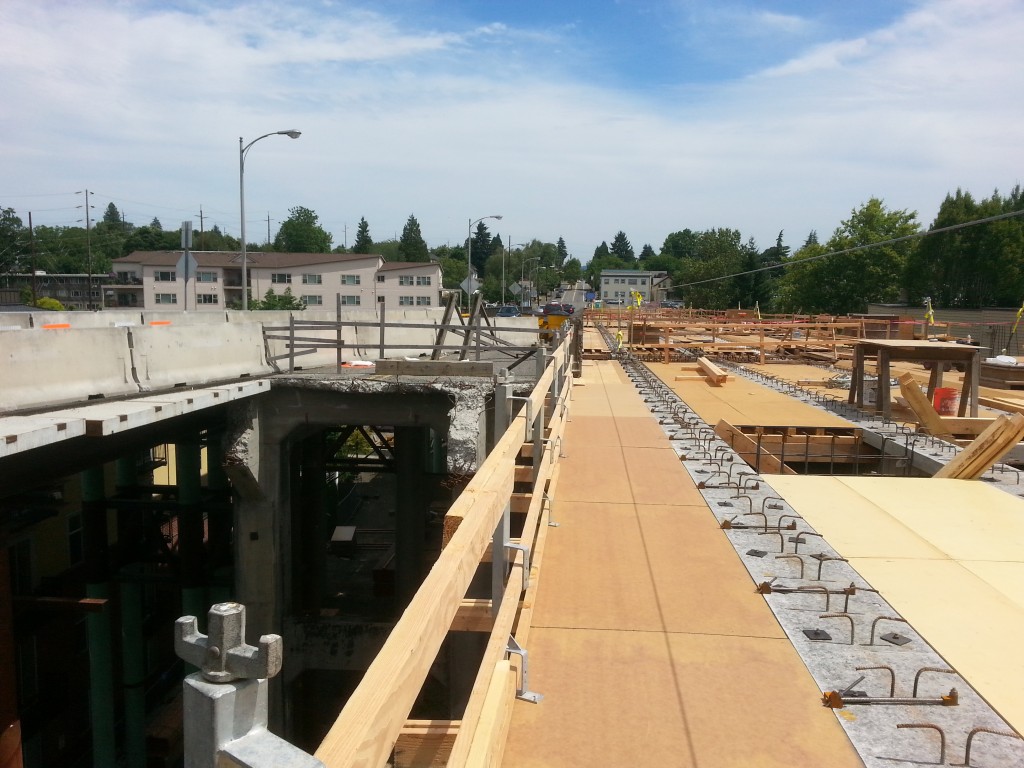
View looking west from the tip of the east side construction. You can see the old bridge and new bridge just inches apart. This small part of the old bridge will be one of the last remaining parts to be addressed, as described below.
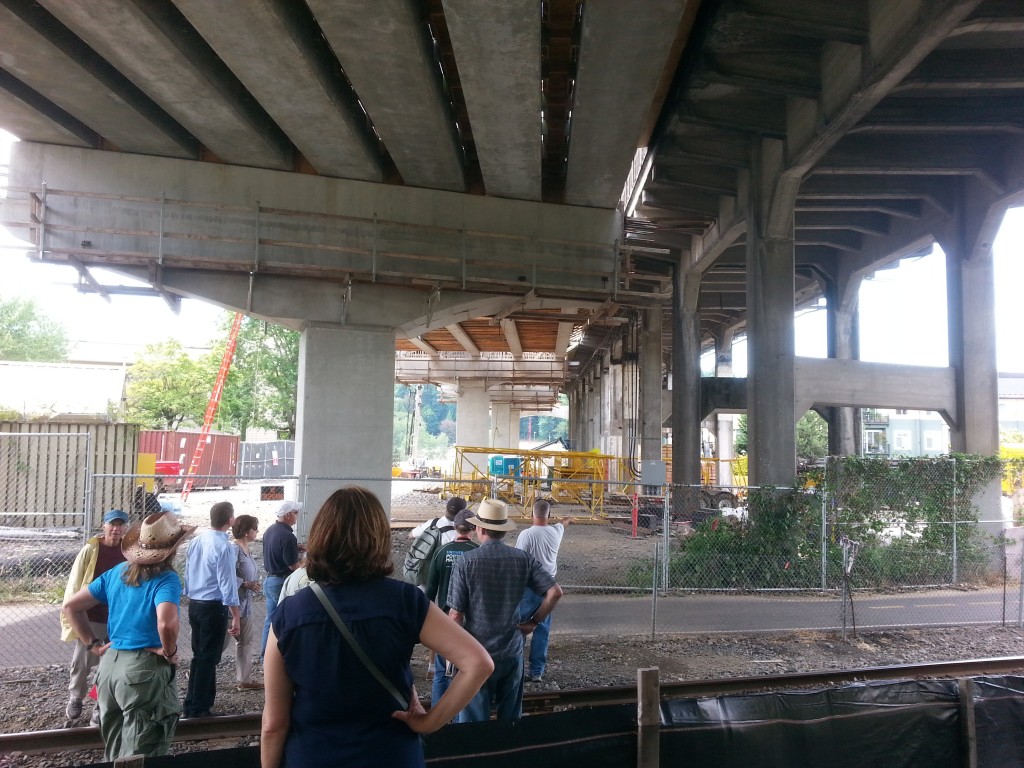
This picture, looking west from the east bank of the river, is a good look at the construction tricks used to keep traffic moving during the bridge construction. The lighter concrete on the left is the new construction, while the darker parts to the right are the old bridge. This part of the old bridge is carrying traffic right now. You’ll notice that the closest arch on the new side is a “T”, but look further down the bridge… you can barely see it, but the farther new arches have two supporting columns instead of just one. When the rest of the bridge is complete, this will be one of the last areas to be addressed. Traffic will be completely diverted onto the new construction while this last remaining part of the old bridge is demolished, and the “T” arches of the new construction will be completed with their second supports.
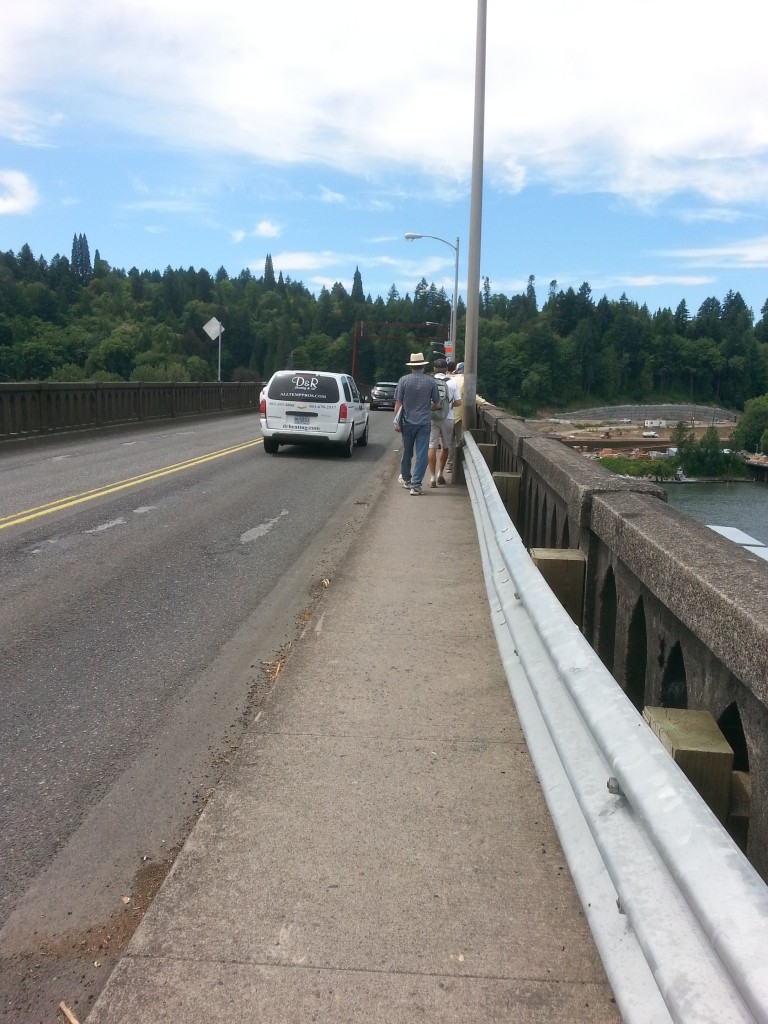
Here’s a reminder of one of the many reasons the Sellwood Bridge needed redoing. The clearance between the traffic lanes and the light posts is only 23”, a dangerous choke point for pedestrians and bicycles trying to pass in opposite directions.
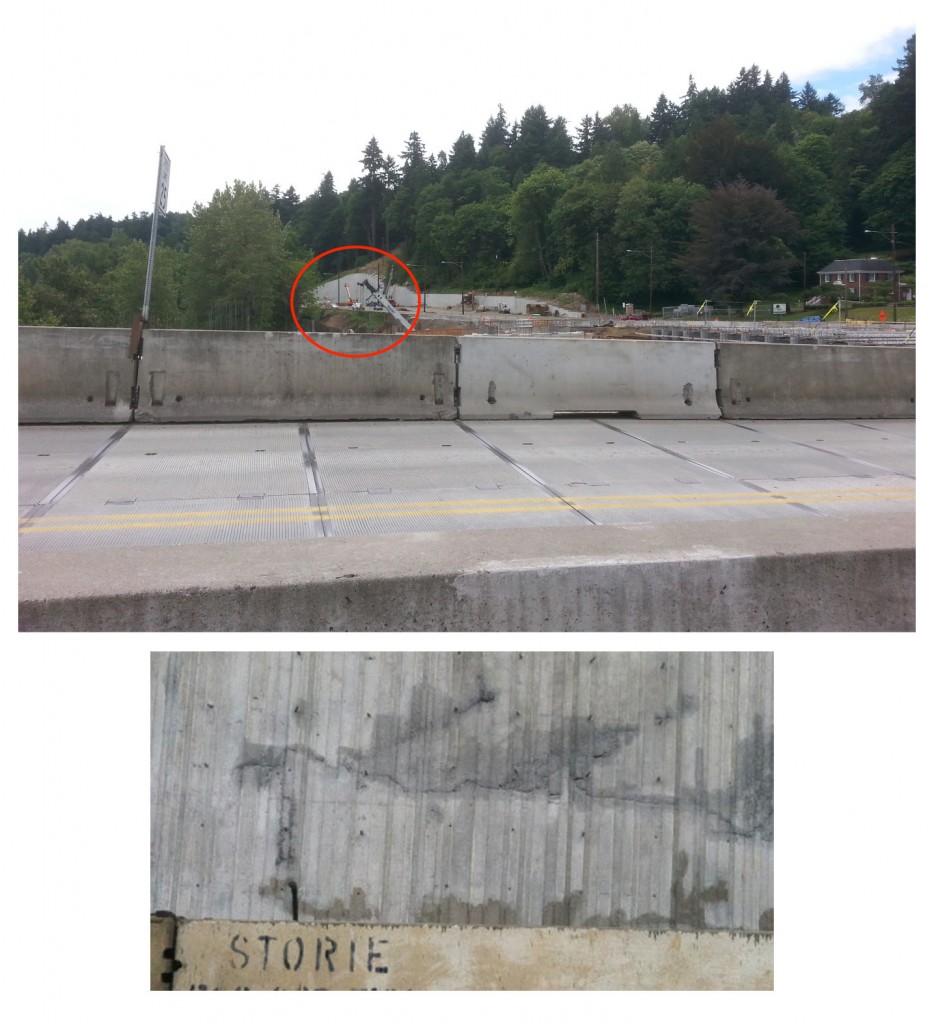
You may have heard a report from OPB that some of the concrete used in the bridge needed to be removed and replaced. It could have been a large and scary error, but wasn’t. The concrete in question was used far down the west bank retaining wall. The top picture shows the area in question (in the red circle) and the bottom picture is a closeup of the concrete repair (in progress). When it’s done, it will look as good as new. Problem solved!
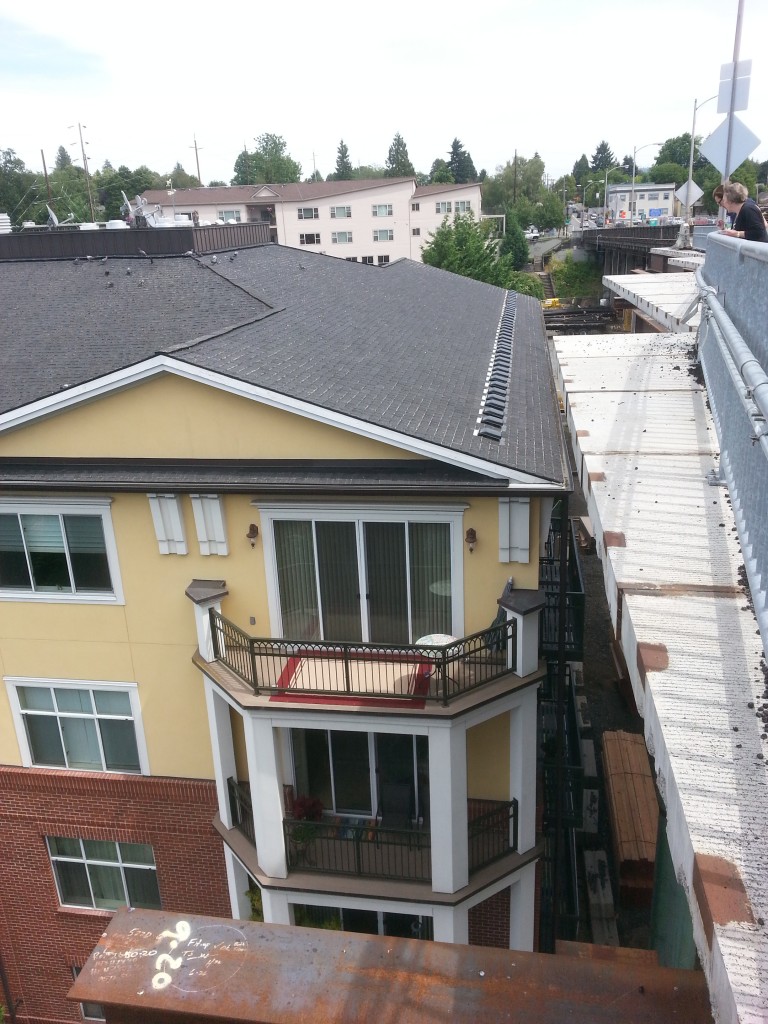
It’s been difficult to wedge a project this big into a quiet neighborhood like Sellwood, but the crews have done an amazing job. This picture of the bridge and the condominiums on the north side shows just how careful they’re being.
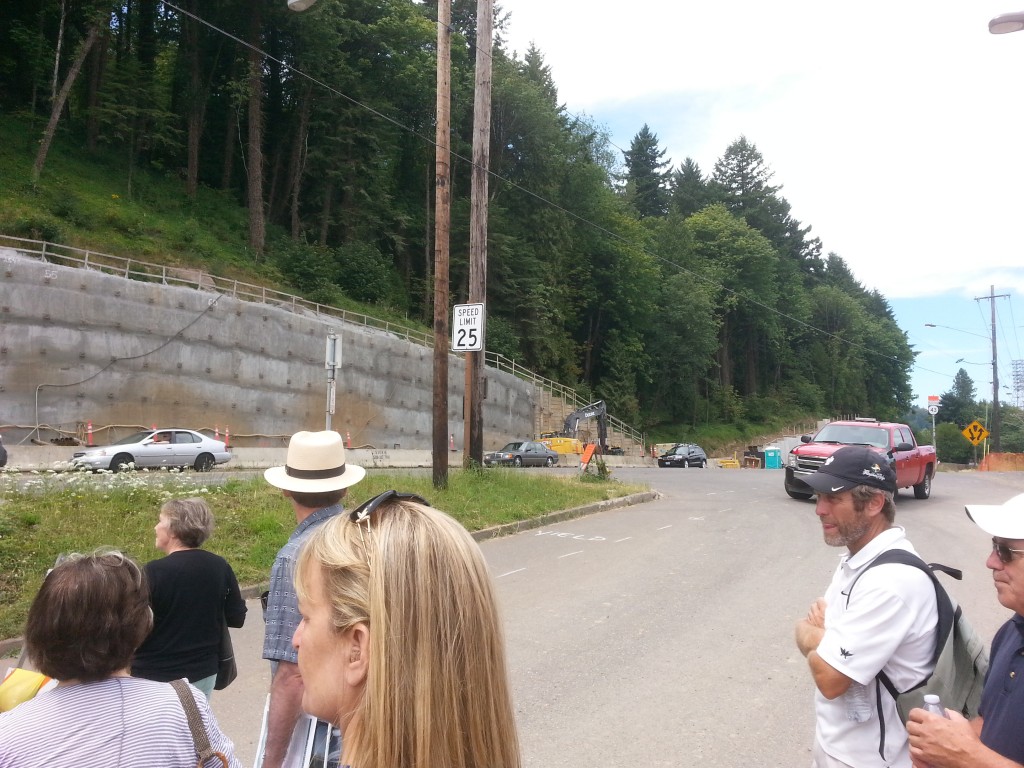
The west side wall construction continues. This section of wall still has the exposed ends of soil nails visible. The soil nails extend 60’ into the hillside to stabilize the soil and attach the wall. Eventually, this wall surface will be covered with the same vertically-striated concrete visible on the most northern end of the hillside.
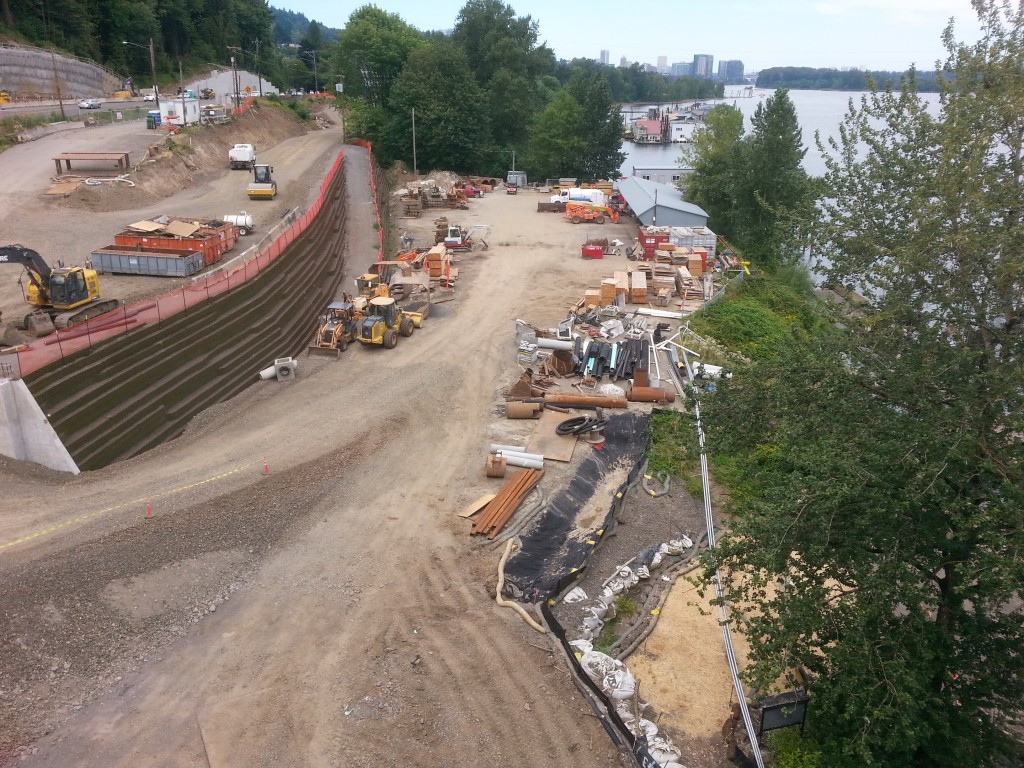
This will eventually be part of the pedestrian and bike path along the west bank. You just have to use your imagination for now.
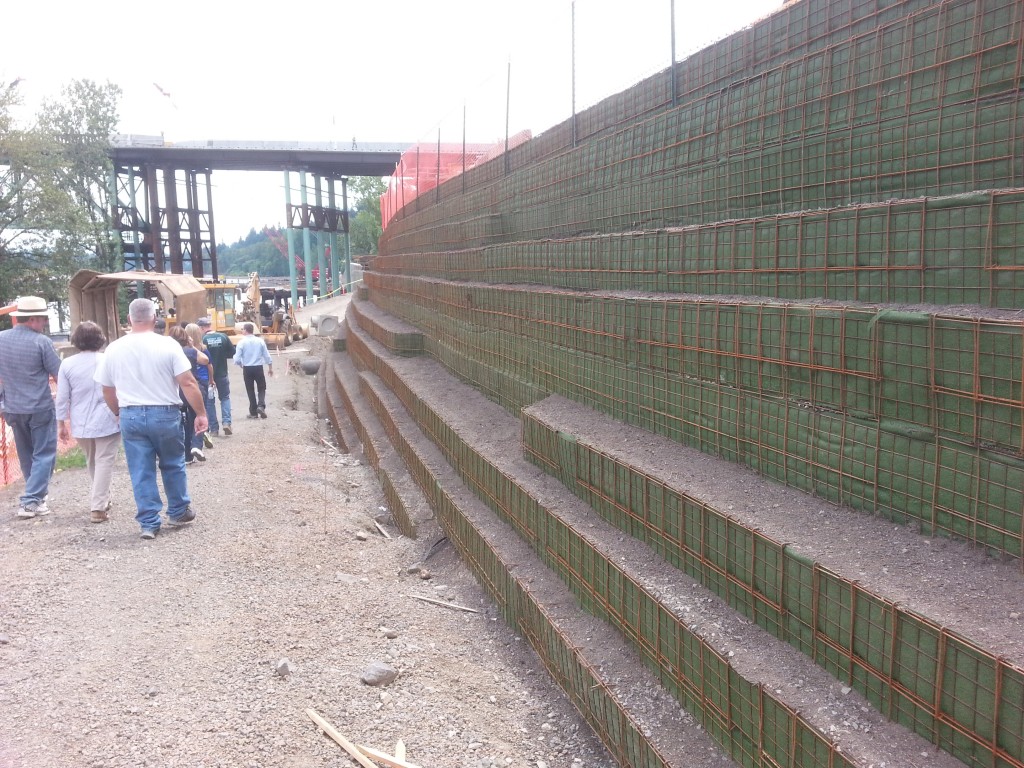
The wall bordering the pedestrian path is designed to be a living wall. When finished, it will be covered with plants embedded into the wall’s structure.
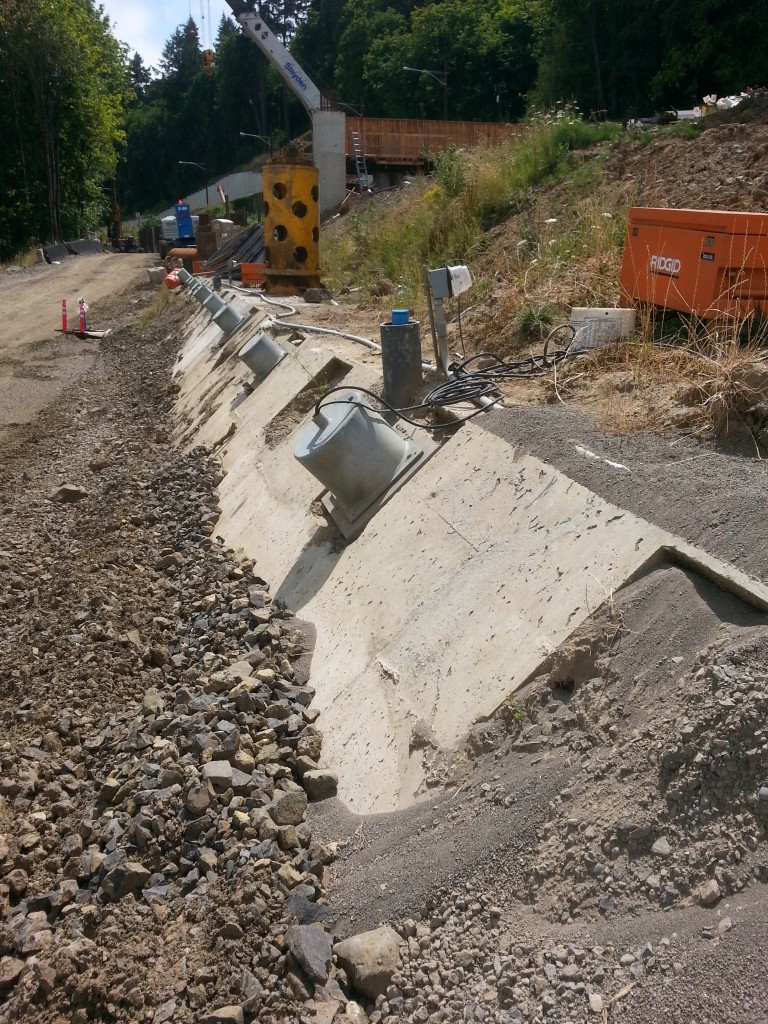
One of the main reasons the Sellwood Bridge was damaged in the first place was that the original engineers didn’t realize the west bank of the river was basically a slow-motion landslide. The pressure over the decades moved the west end and buckled the support structure, so the new bridge will have motion monitoring equipment integrated into its design. These cylinders are access points to probes that extend deep into the ground. When the bridge is finished they’ll provide ongoing data on ground movement. Right now, they’re being used to confirm that all the engineering on the west side to stop the landslide has actually been effective.
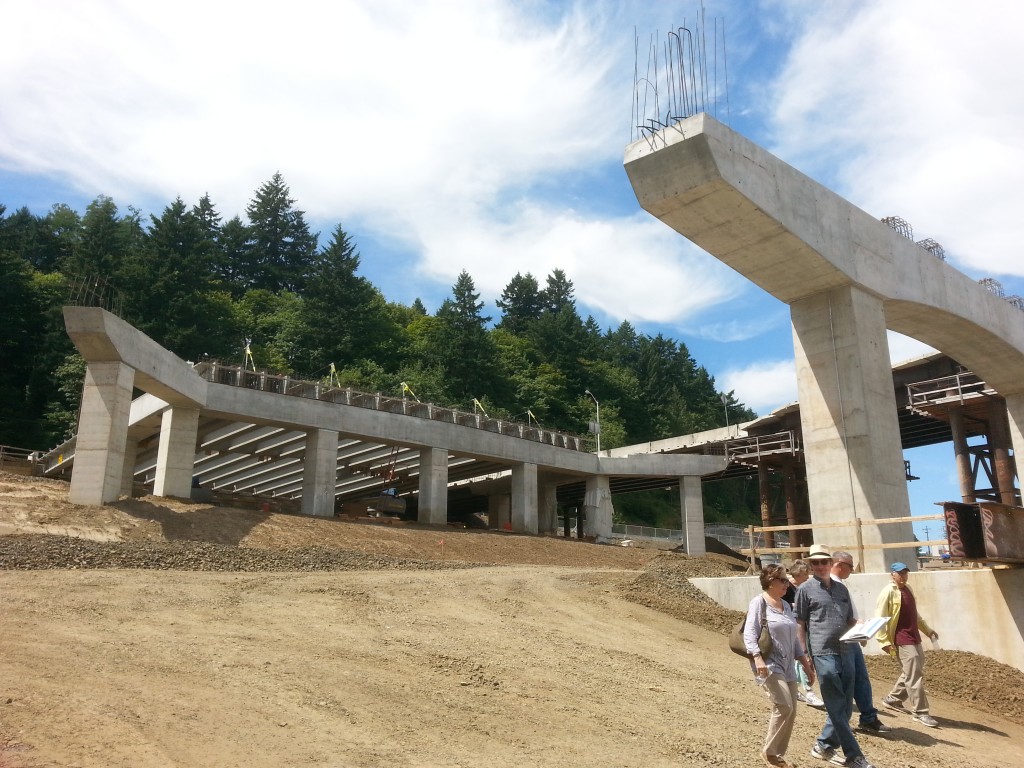
The new interchange on the west side of the river is a major part of the Sellwood Bridge project. This picture shows the west approach span to the bridge in the foreground, with the interchange itself in the background.
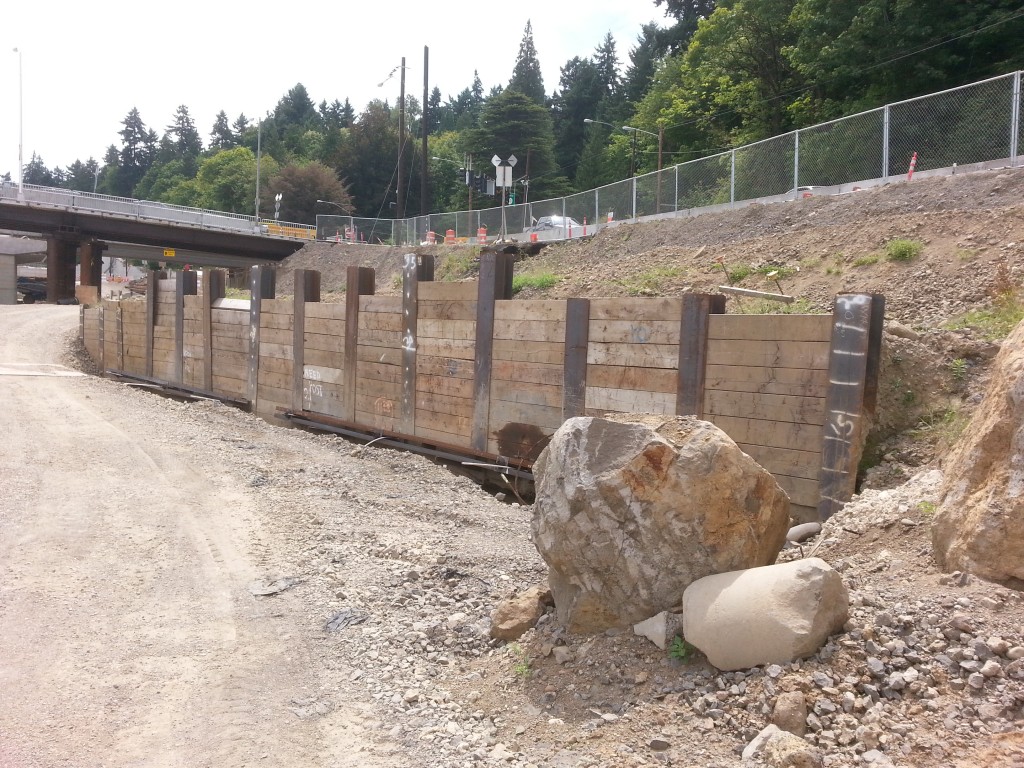
This type of wood-and-steel wall, where 12×12 wooden beams are captured between vertical steel I-beams, is common throughout the project. Interestingly, the first beam goes in at the top and the other beams are added from below. Don’t ask how.
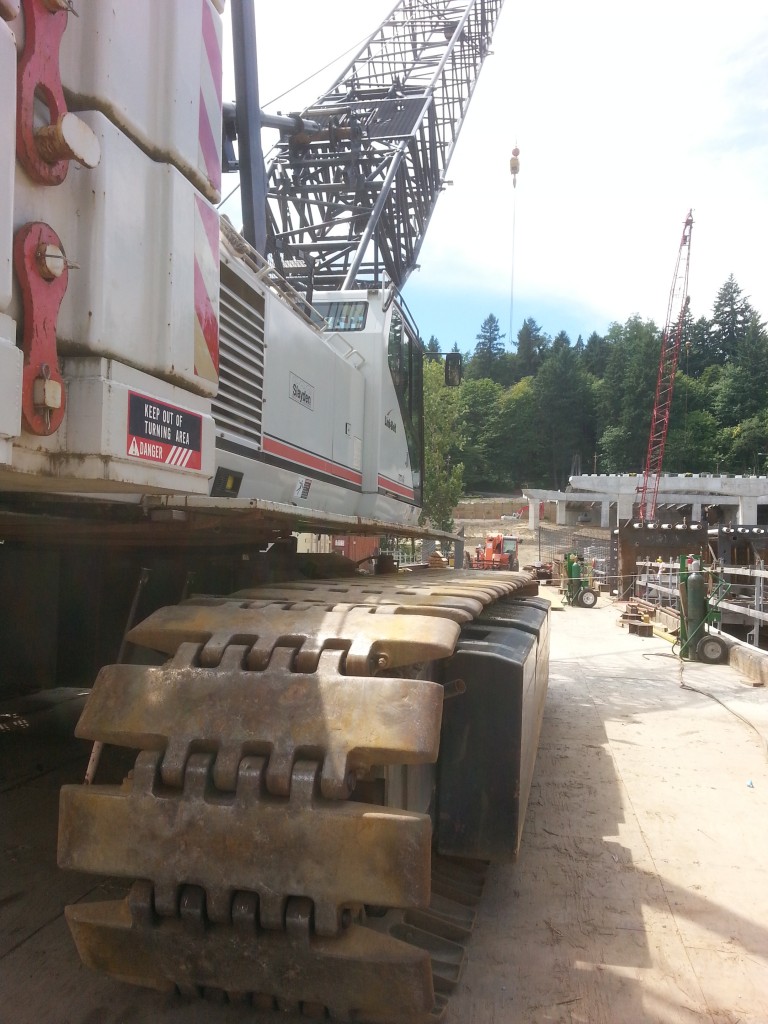
It’s easy to forget just how massive the equipment for this project is. They don’t look as big when you drive past, but try getting up close to one of those cranes… they’re GIGANTIC!
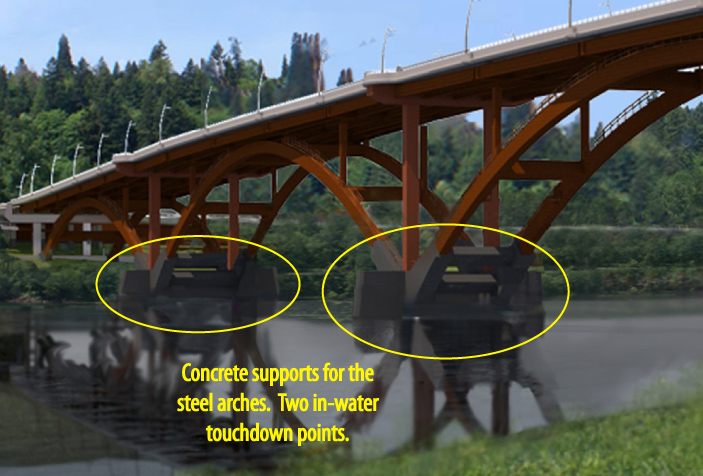
Most of the construction in the river is centered around the concrete supports that will hold the main steel support arches. For the next few pictures, as an orientation, here’s what the steel arch supports will eventually look like.
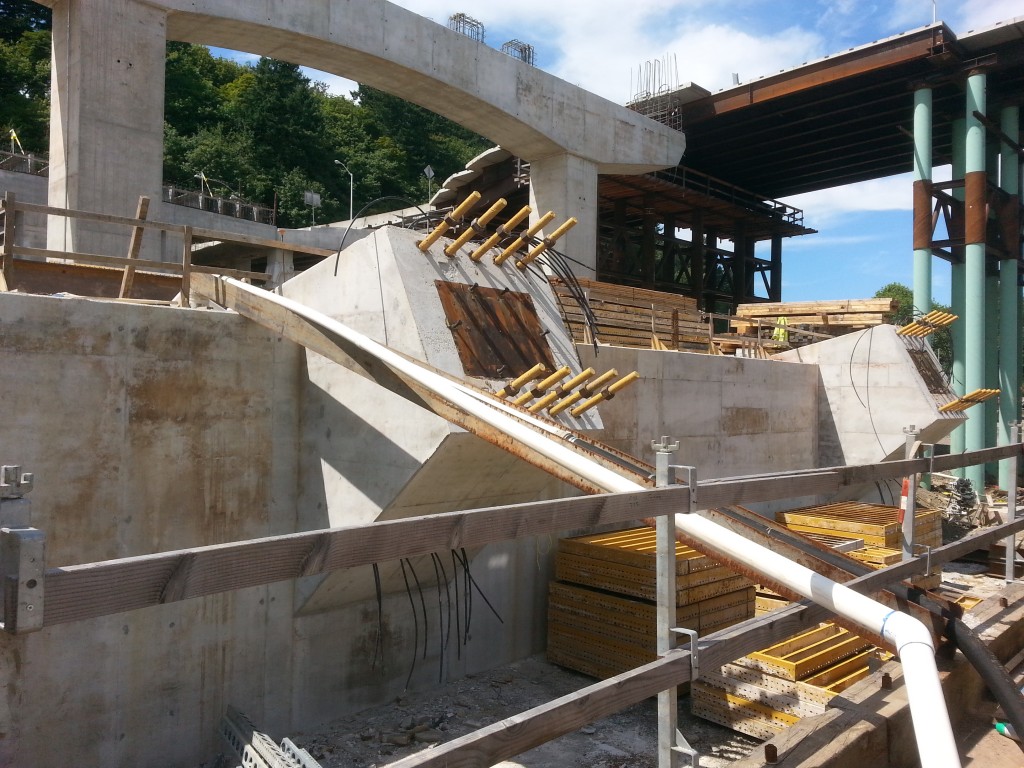
This is the support structure where the steel arch will touch down on the west bank. Those black cable-looking things next to the yellow rods aren’t structural, but they are vital. As concrete sets after pouring, it heats up. In a block of concrete as big as this, the heat in the center of the block can’t make it to the surface to be released. If the heat can’t dissipate, the concrete will be weaker when it eventually sets. Those “cables” are actually tubes to carry water through the concrete, cooling the core and allowing uniform setting.
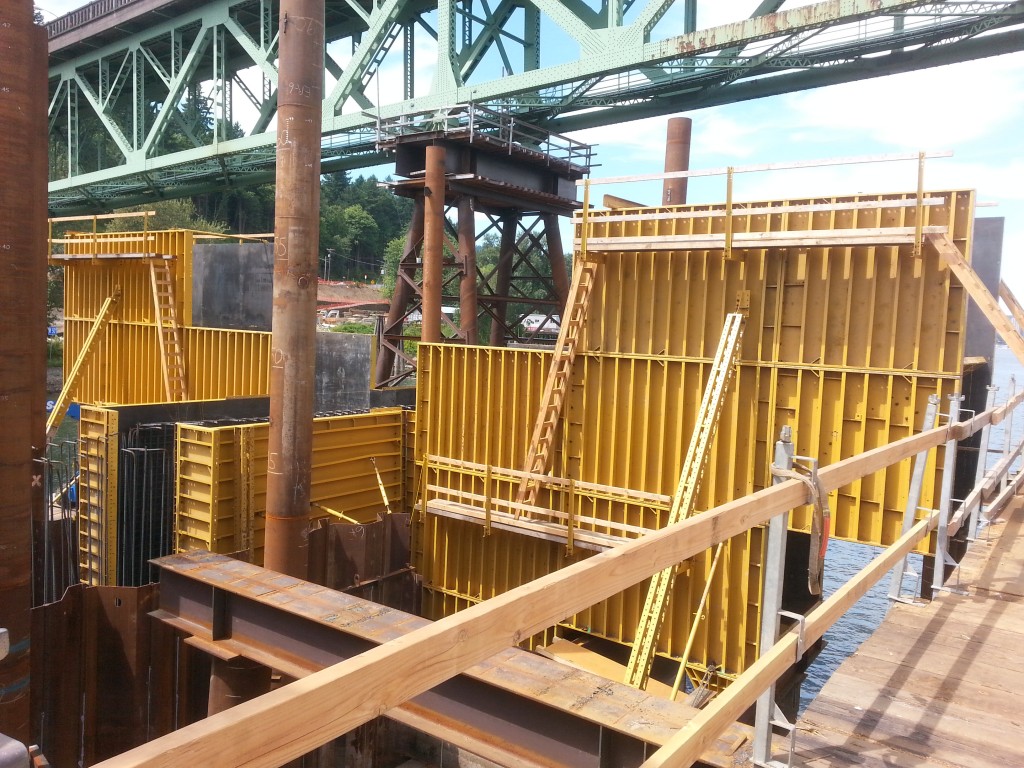
It looks like there is a lot going on under the bridge (and of course there is) but most of the construction revolves around building the casting boxes that will shape the poured concrete. The yellow panels, gigantic as they are, are just the walls of a concrete mold.
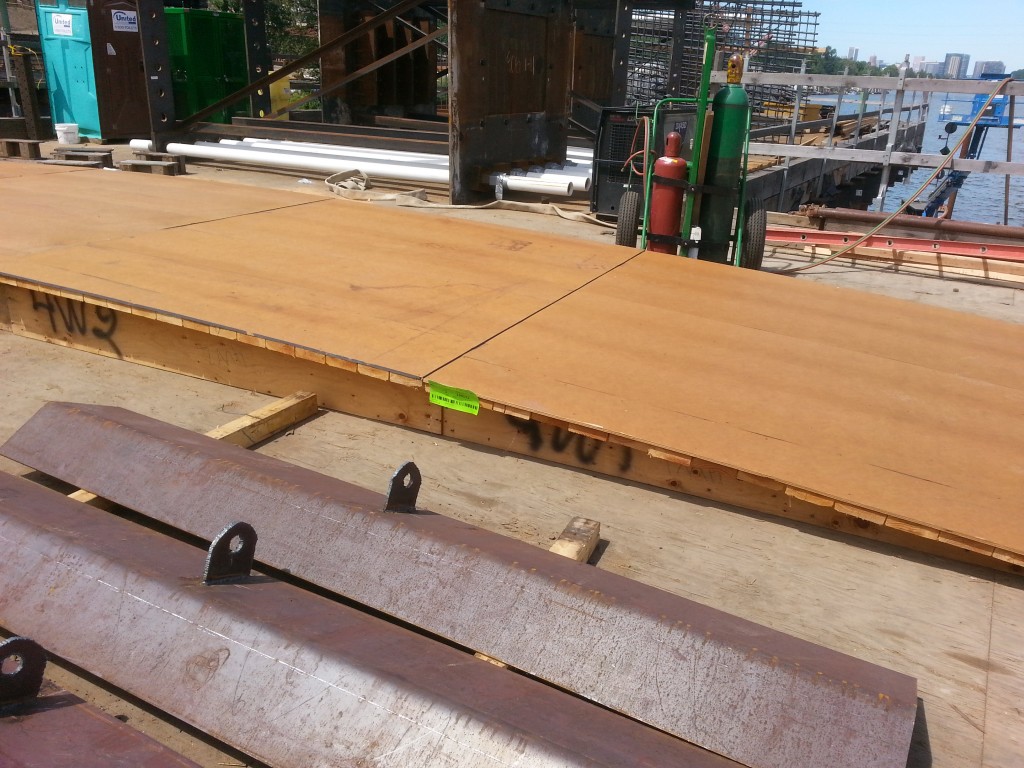
The big wooden piece with the green tag is a template for the sweep of the big steel support arches that will hold up the bridge.
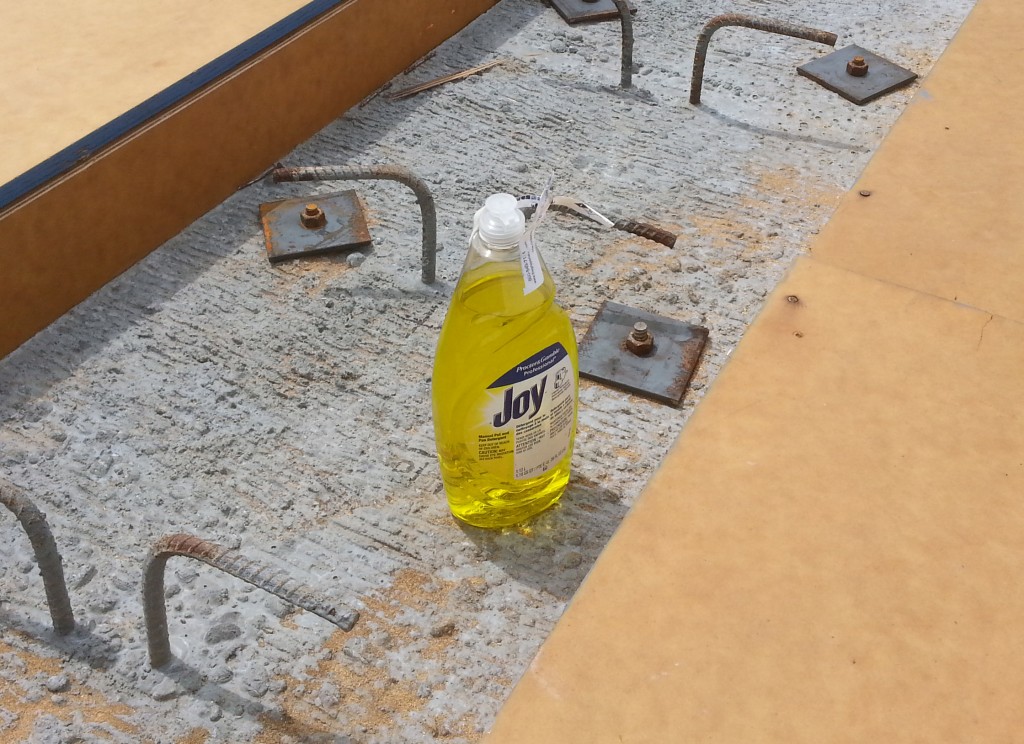
No, it’s not to keep the bridge clean during construction. This bottle of dishwashing liquid helps slightly rusty nuts turn on to slightly rusty threads.
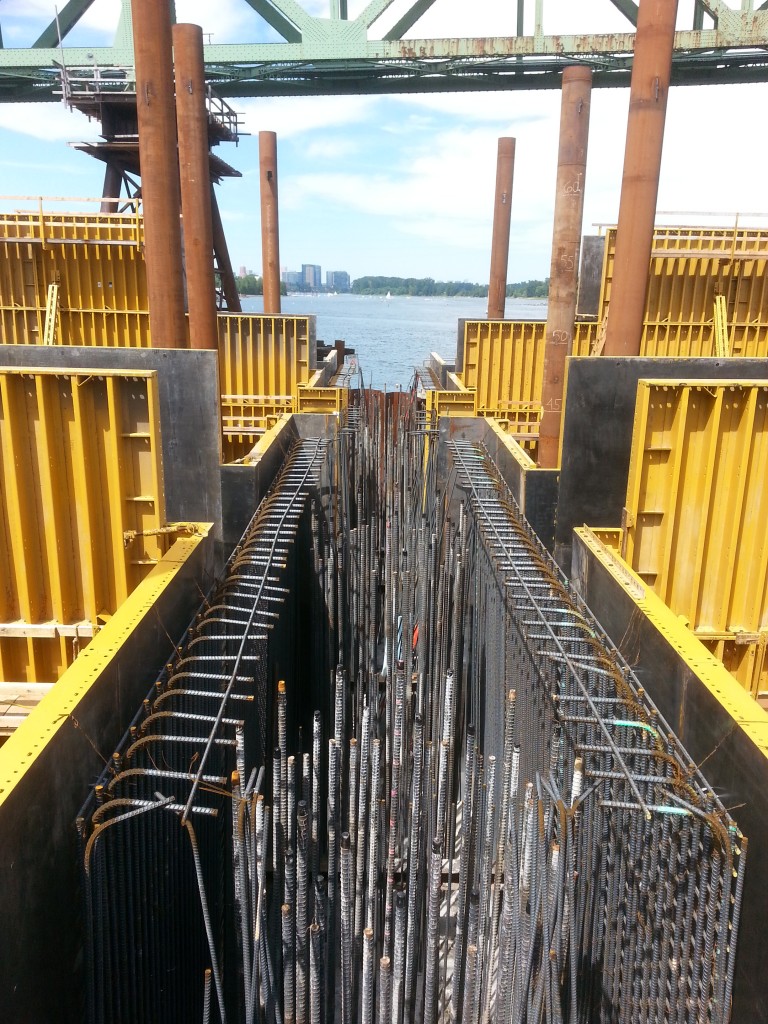
The steel arches will touch down on concrete supports at two points in the water. This is a view into the box where the concrete bases will be cast, showing the massive amounts of rebar needed to make the concrete structurally sound.
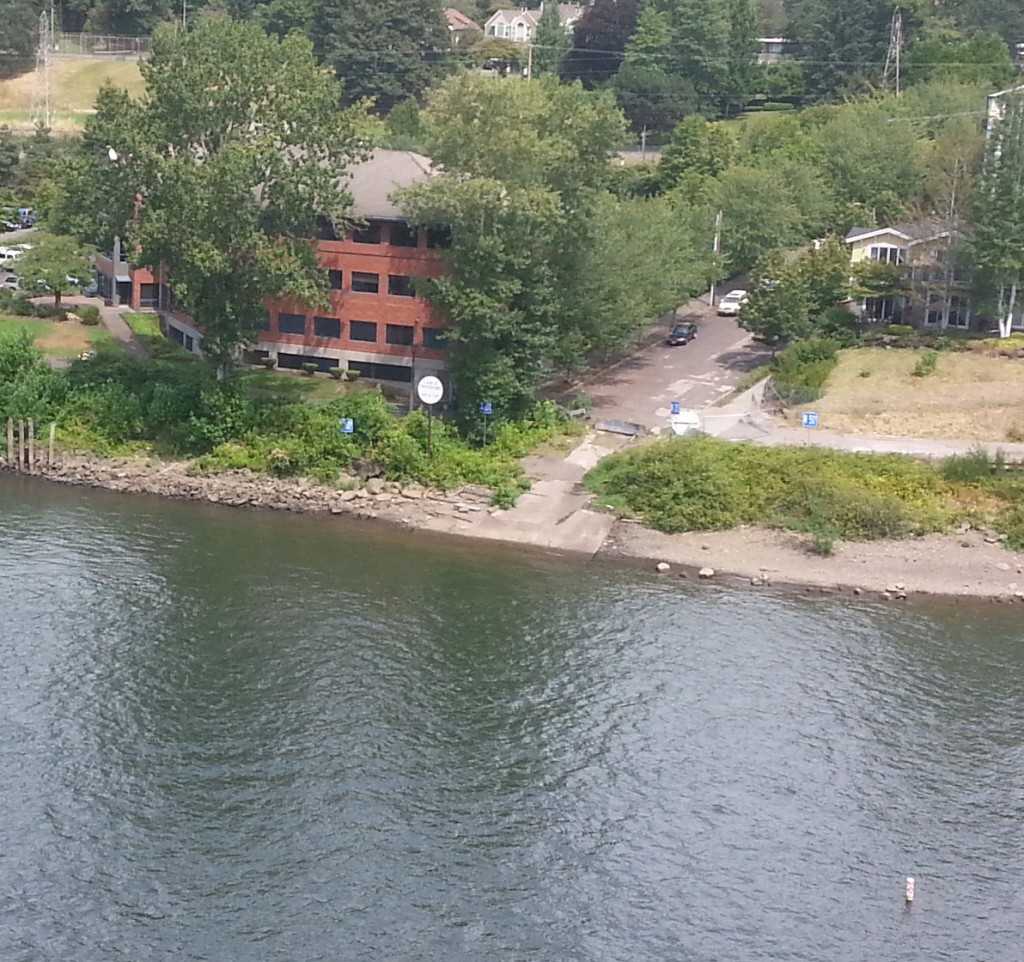
This boat landing on the east bank at the end of Spokane Street has been neglected for many years. The rumor is that when the bridge construction is complete, the landing may be spruced up and returned to service. Just a rumor, though.
Construction on the new bridge began in December of 2012, and is slated to continue until Fall of 2016. Here are some upcoming milestones you can look forward to..
- Next concrete pour on the east side road bed- Early Sep 2014
- Concrete pour for Hwy 43 ramp- Spring 2015
- Steel arches delivered- late 2014 or early 2015
- Traffic on new bridge- late 2015 or early 2016
- Demolition of east end portion of the old bridge- Winter or Spring 2016
- Project complete and crews go home- Late Fall 2016 (The new bridge opens earlier, but it’s not 100% complete until late 2016)
We bring you monthly reports on the progress of the Sellwood Bridge construction in our monthly newsletter column, Sellwood Bridge Update. If you want more details more often, then Multnomah County maintains the definitive website on everything related to the Sellwood Bridge Replacement project at www.sellwoodbridge.org. Construction and closure alerts, archived information, and other resources are all available 24/7 for your convenience.
Until the next update, remember that the Sellwood Bridge is safe and open. There are inevitable construction delays, but they’re very minor… you might get caught by a flagger for a couple minutes, but that’s about it. Don’t let the bridge construction prevent you from coming to see us… and you might even look at it as a chance to see something that your grandchildren will one day ask about. Come on in!

